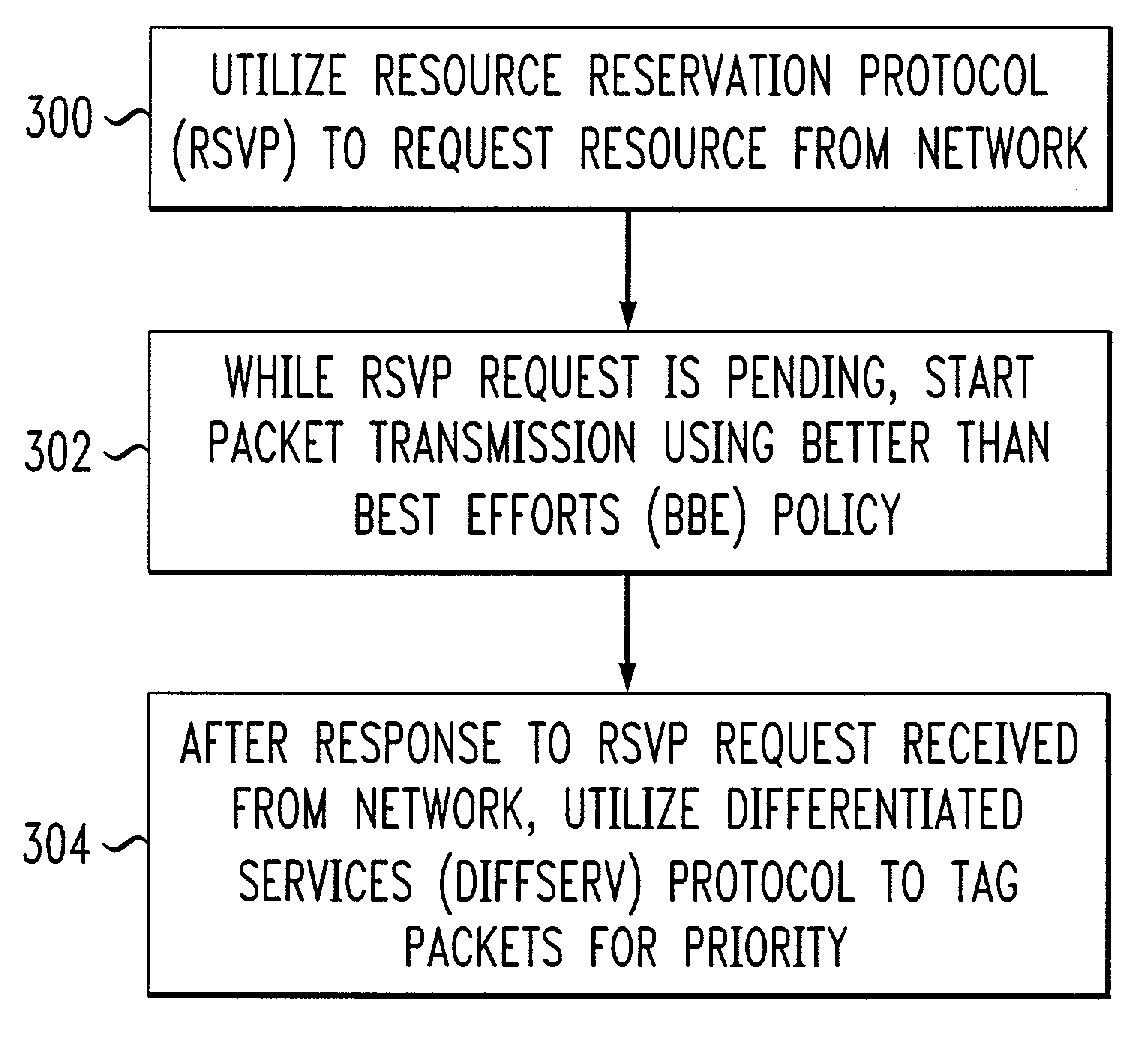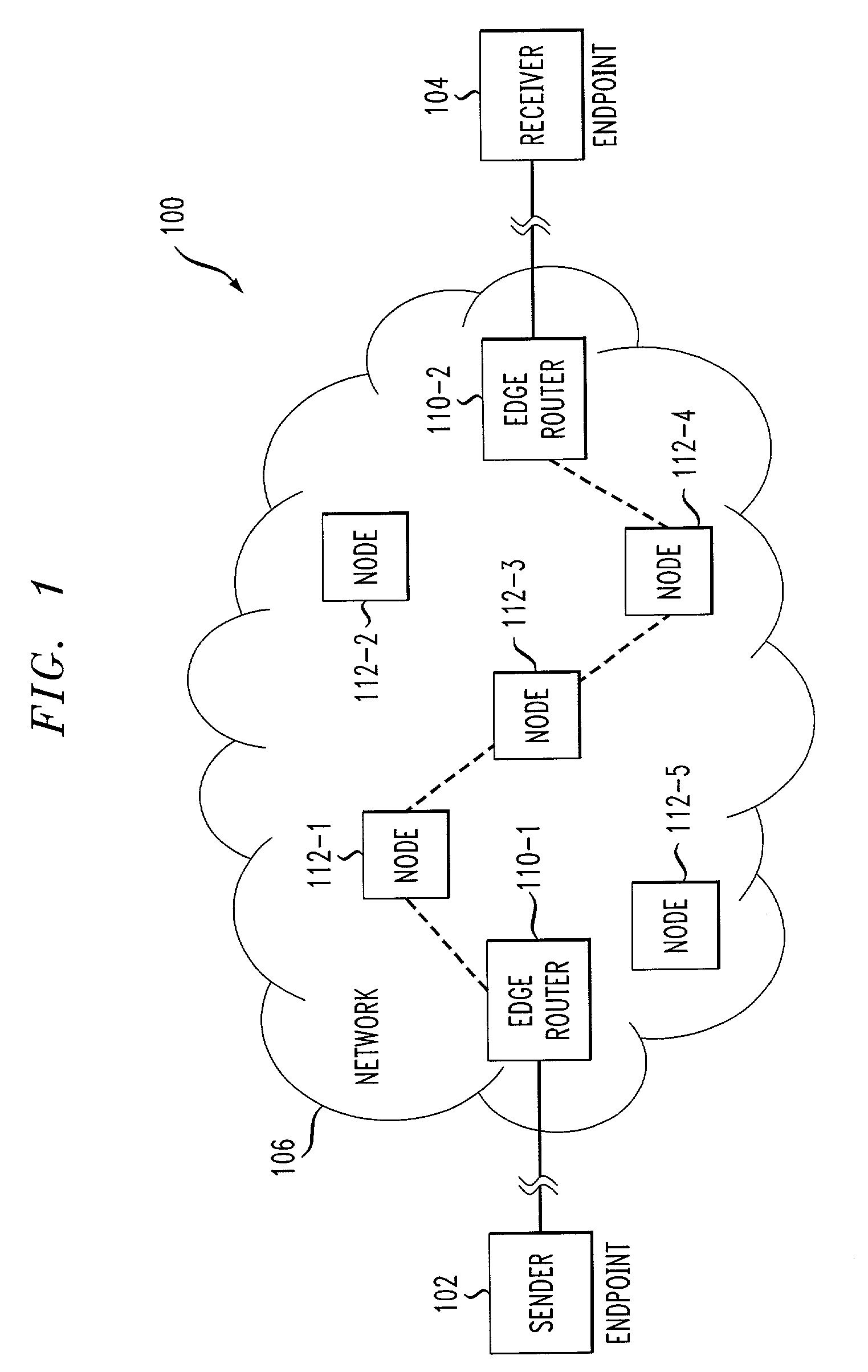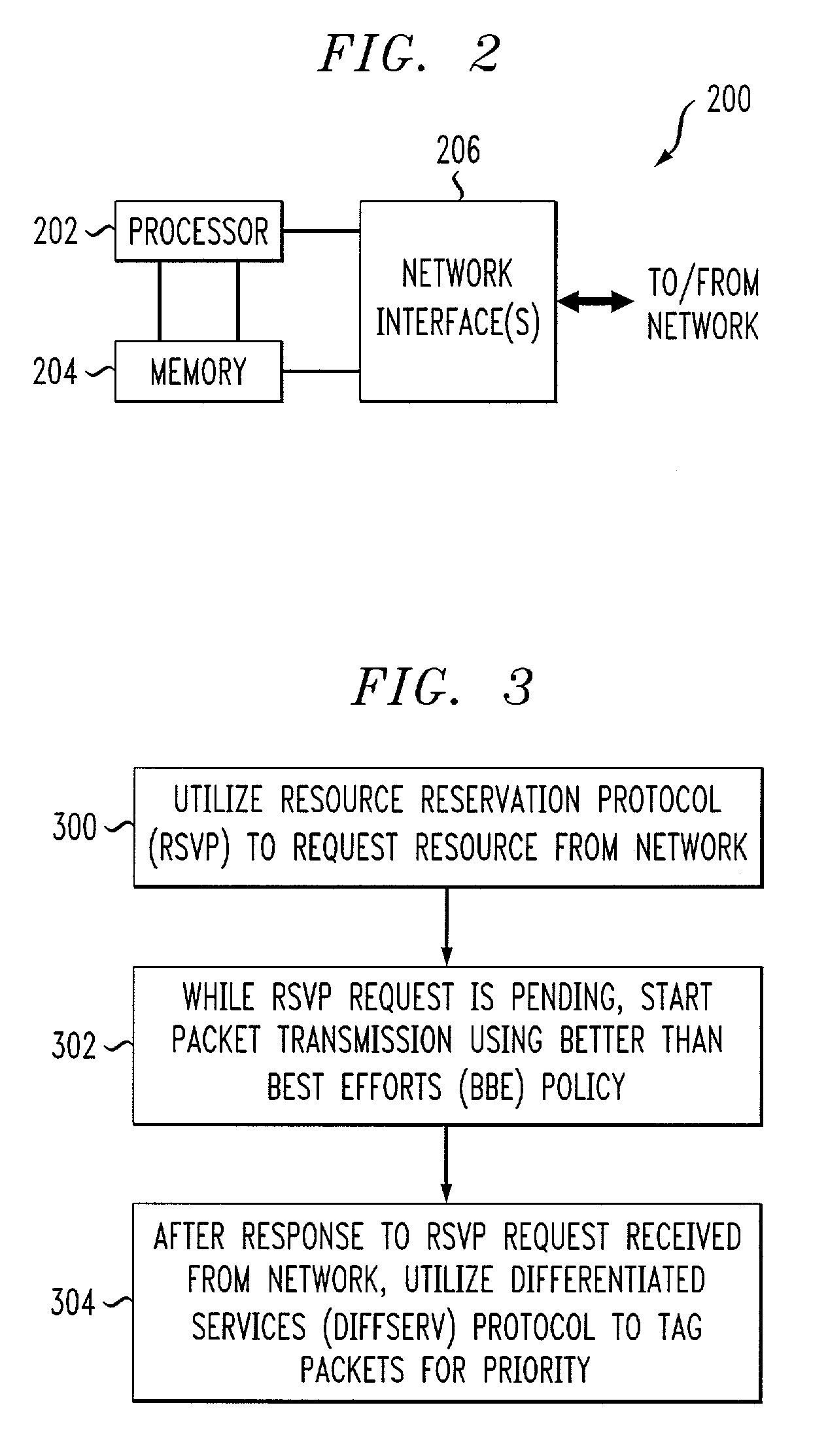Method and apparatus for policy and admission control in packet-based communication systems
a packet-based communication and policy-based technology, applied in data switching networks, frequency-division multiplexes, instruments, etc., can solve the problems of annoying users, increasing latency in the establishment of qos, and reducing so as to reduce the dependence of qos signaling and reduce latency and complexity
- Summary
- Abstract
- Description
- Claims
- Application Information
AI Technical Summary
Benefits of technology
Problems solved by technology
Method used
Image
Examples
Embodiment Construction
[0015]The present invention will be illustrated below in conjunction with an exemplary VoIP communication system configured to support Internet telephony applications. It should be understood, however, that the disclosed techniques are suitable for use with a wide variety of other types of packet-based systems including, for example, Asynchronous Transfer Mode (ATM) and Frame Relay systems. Also, the invention is not limited to use with any particular type of communication system or configuration of system elements. Those skilled in the art will recognize that the disclosed techniques may be used in any communication application in which it is desirable to provide Quality of Service (QoS) guarantees for Internet protocol (IP) communications or other similar types of packet-based communications over a network.
[0016]The term “packet” as used herein is intended to include not only IP packets but also other types of packets used in other packet-based communication systems.
[0017]The term...
PUM
 Login to View More
Login to View More Abstract
Description
Claims
Application Information
 Login to View More
Login to View More - R&D
- Intellectual Property
- Life Sciences
- Materials
- Tech Scout
- Unparalleled Data Quality
- Higher Quality Content
- 60% Fewer Hallucinations
Browse by: Latest US Patents, China's latest patents, Technical Efficacy Thesaurus, Application Domain, Technology Topic, Popular Technical Reports.
© 2025 PatSnap. All rights reserved.Legal|Privacy policy|Modern Slavery Act Transparency Statement|Sitemap|About US| Contact US: help@patsnap.com



